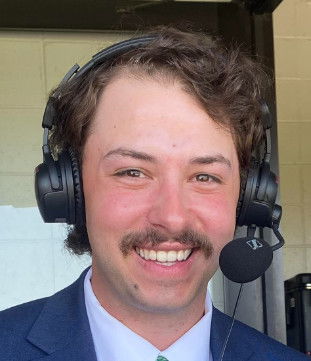
Could a shortened MLB season give Cubs' pitching staff an advantage? |
With the world of sports and Major League Baseball at a halt, it is unknown when the 2020 season will start.
Due to the Covid-19 Pandemic and the entire nation on the lookout, sports knowing their place paused the action to raise awareness and prevent the spread of the Coronavirus. Major league baseball was one of the many leagues to shut down, and the MLB did so by canceling spring training and pushing back the start of the major league season by two weeks. Those two weeks would be over in early April, and following a recommendation from the Center for Disease Control that has encouraged all events containing 50 or more people be postponed until May at the earliest, the MLB has delayed their season until May 1st at the earliest. Keeping in mind the fact that every team will need at least two weeks, probably more, to get their routines back in sync, arms up to speed and for the team to play a few exhibition games before making final roster decisions — we are then looking at a late May, early June opening day. From there, the MLB has two options, a) play all 162 games (which would have the season-ending at some point in December most likely) or b) cut the schedule down to around 80-120 games, which seems to be the most likely option at this point. You may be asking where I am going with all of this, and here is my point: a shorter season would give the Cubs’ aging pitching staff an advantage. Here’s why. (Since bullpens are usually volatile, we decided to focus on the starting staff) One of the most prominent question marks on the starting rotation this season is how much more does Jon Lester have in the tank. All Cubs fans remember how vital his acquisition was ahead of the 2015 season, arguably the most important in Cubs history. Lester has devoured inning and dominated big games during his stint with the Cubs, but last season Lester went only 13-10 with a 4.46 ERA, his highest since 2012 with Boston. In the final year of his six-year 155 million dollar deal, Lester will look to earn what is likely the final contract of his career — but the now 36-year-old might benefit from a shortened season. While Lester’s first-half ERA in his career has been 3.50 and his career second-half ERA is 3.65, the more recent years have shown that Lester has begun to run out of gas as the season winds down. In 2018 Lester pitched to a dazzling 2.58 ERA in the first half, but that rose to 4.50 in the second half. Last season was even more drastic. In 2019, Lester’s first-half ERA was 3.72, but his second-half ERA ballooned to 5.35. So potentially Big Jon would be able to stay fresh for the entire season if the MLB decided to cut it down. In this study of how well pitchers pitch at the beginning of the season vs. the second half, Yu Darvish was a bit of an outlier. A year ago, Darvish’s first-half ERA was 5.02, and he was miraculously able to lower that and pitch to a 2.76 ERA in the second half. In his career, Darvish’s first and second half ERA’s are generally pretty similar at 3.64 (first half) and 3.48 (second half). Kyle Hendricks has been knowns for his consistency during his career in a Cubs uniform, and his first and second half splits in 2019 were no different. The professor pitched to a 3.49 ERA in the first half a season ago, and in the second half, his ERA only dipped .07 points to 3.42. Throughout his career, Hendricks has been a traditionally strong second half pitcher. His career ERA in the first half is 3.52, but his career numbers in the second half drop to a sparkling 2.78 ERA. Moving right along in the rotation, Jose Quintana is the next man on the list. If you remember a year ago, Quintana had immense struggles down the stretch of the season. Quintana’s ERA in the first half of 2019 was 4.19, and in the second half, that rose to a very high 5.40 ERA. In his career in Chicago, both on the south and north sides, the 31-year old’s splits were a bit less drastic. In the first half, Quintana’s career ERA is 3.87, which in the second half drops to 3.57 — but in recent years, Quintana’s second halves have not been so kind. For this article, we are inserting Tyler Chatwood as the fifth starter. While spending some time in the bullpen, Chatwood has traditionally been a starter. In 2019, although he spent the majority of the year in the bullpen, the trend continued with a first-half ERA of 4.40, and the 30-year-old pitched to a 2.84 ERA in the second half. Across his eight-year career, Chatwood has a 4.00 ERA in the first half of the season, and that ERA rises to 5.08 in the second half. While missing out on baseball has not been ideal, it is possible that a potential shortened season could have some benefit for a Cubs starting staff with no player younger than 30.





